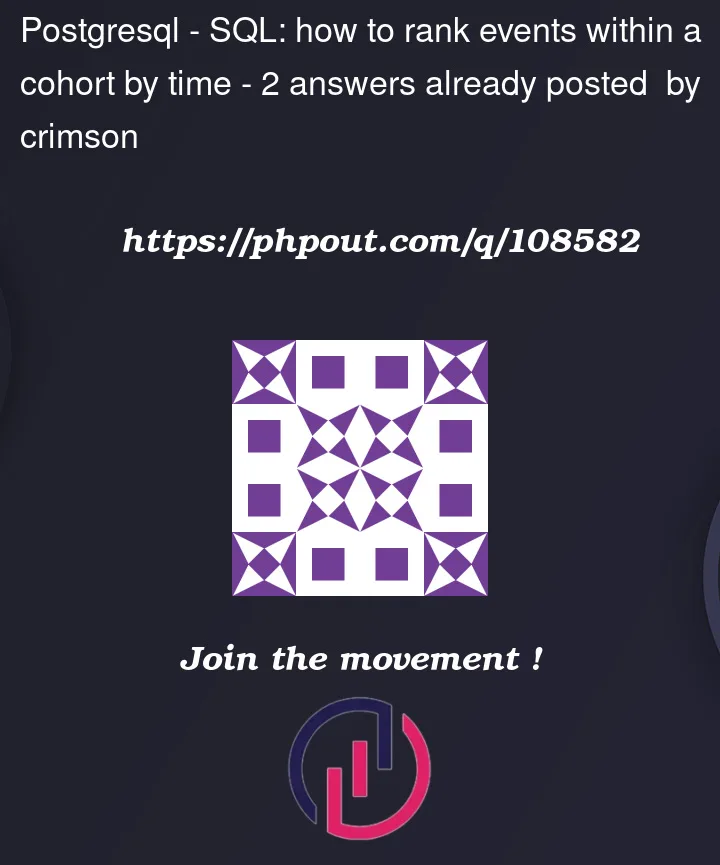I’m working with a Postgres table named orders that looks like this:
user_id product order_date
1 pants 7/1/2022
2 shirt 6/1/2022
1 socks 3/17/2023
3 pants 2/17/2023
4 shirt 3/13/2023
2 pants 8/15/2022
1 hat 4/15/2022
5 hat 3/14/2023
2 socks 12/3/2022
3 shirt 4/15/2023
4 socks 1/15/2023
Here is a dB Fiddle with the data:
https://www.db-fiddle.com/f/uNGjP7gpKwdPGrJ7XmT7k3/0
My goal is to output a table that shows the sequence of a customer’s orders. For example, customer 1 first purchased a hat, then purchased pants, and finally purchased socks.
Here is the desired output:
user_id first_order second_order third_order
1 hat pants socks
2 shirt pants socks
3 pants shirt <null>
4 socks shirt <null>
5 hat <null> <null>
I used RANK() OVER (PARTITION BY user_id ORDER BY order_date) AS rank to arrange the sequence of the orders by user_id. This works in "long" form. However, I’m not able to translate this into the form of the table above.
How would I do that?
Thanks for your help,
-Rachel




2
Answers
You can use a series of
left joins on a subquery with the ranks. Your joining criteria can be tojointhe relation on both the user name and an incremented rank number. This way, rank2rows are joined onto rank1rows for a given user, and so on:See fiddle.
You can do it using the conditional aggregation, using
group by, case clause and the aggregation functionmax():Demo here